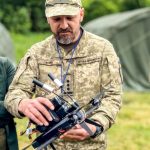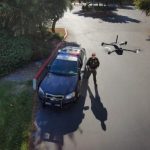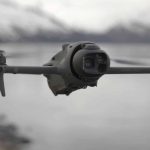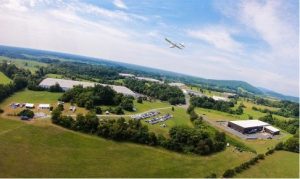Progress in BVLOS Rulemaking: A Turning Point for U.S. Commercial Drone Operations
Published on May 15, 2025, by Miriam McNabb
After significant anticipation and advocacy from the drone industry, the United States is witnessing progress on a critical federal rule that could revolutionize commercial drone operations: the Beyond Visual Line of Sight (BVLOS) rule. This anticipated regulation is designed to allow drones to operate beyond the operator’s sight without necessitating individual waivers. This breakthrough could enable extensive applications, including drone delivery, emergency response, and infrastructure inspections.
Importance of BVLOS Regulations
The capability for BVLOS operation is often viewed as the “holy grail” of the drone sector. Current regulations mandate that operators maintain visibility of drones, restricting their operational range and effectiveness. This limitation presents challenges for commercial endeavors such as delivering medical supplies to isolated areas, inspecting extensive pipelines or power lines, and using drones for emergency responses, which either become unfeasible or require lengthy, case-by-case FAA approvals.
Industry advocates, including the Commercial Drone Alliance (CDA), have highlighted the necessity of standardized BVLOS regulations for the U.S. to remain competitive internationally, particularly as nations like China rapidly develop their drone capabilities. “Outdated regulations and lack of action threaten America’s security and leadership in aviation,” stated CDA CEO Lisa Ellman. She emphasized that the new regulations would unlock the genuine benefits of safe, secure, and scalable drone operations for the American populace.
Delayed Progress and Renewed Energy
The journey towards establishing a BVLOS rule has been slow. The FAA initiated a special advisory committee in 2021 to formulate recommendations, delivering a comprehensive report in 2022. Despite several legislative pushes, including a mandate in the 2024 FAA Reauthorization Act for a proposed rule by September 2024, deadlines have frequently been extended. As of early 2025, the industry remains in waiting for the Notice of Proposed Rulemaking (NPRM), the first official step in establishing the rule.
However, a new wave of momentum has emerged. On May 14, 2025, the Trump Administration forwarded the BVLOS rule to the White House for review, which is a crucial step prior to publishing the NPRM. The CDA and other industry stakeholders praised this action as an encouraging sign of renewed federal commitment. FAA officials have reiterated their aim to release the NPRM by the end of 2025 and finalize the rule by January 2026, as required by Congress.
The Rulemaking Journey Ahead
The enactment of the BVLOS ruling will follow several important stages:
- Notice of Proposed Rulemaking (NPRM): The FAA will issue a draft of the proposed BVLOS rule, which will detail the requirements and standards for operators. This is scheduled for release by the end of 2024.
- Public Comment Period: Following the publication of the NPRM, there will typically be a 30 to 90-day period for public, industry, and other stakeholders to provide feedback.
- Reviewing Comments: The FAA will assess all comments, consider suggested revisions, and amend the proposed rule. Depending on the volume and complexity of responses, this stage can be protracted.
- Final Rule Publication: Subsequent to revisions, the FAA will release the final BVLOS rule, with January 2026 marked as the current target for this milestone.
Anticipated Features of the BVLOS Rule
While specific details are yet to be revealed, it is anticipated that the rule will closely align with the recommendations from the BVLOS Aviation Rulemaking Committee (ARC). The ARC proposed a unified set of regulations for all BVLOS operations, pursuing clarity and scalability across various applications. Additionally, the FAA is contemplating a two-pathway system: expedited permits for lower-risk operations and certificates for larger-scale or more intricate missions.
What’s at Stake?
The implications are significant. Without BVLOS regulations, the U.S. risks lagging in drone technology, along with potential economic stagnation and missed opportunities for job creation. Conversely, with these regulations in place, experts predict a wave of investment, innovation, and new services beneficial to sectors such as healthcare, energy, and public safety.
As the regulatory process unfolds, industry leaders encourage all stakeholders to engage in the public comment period to help shape a rule that is safe, effective, and ready for future advancements.
“This represents a vital step towards better managing low-altitude airspace for commercial drone activities,” noted CDA Policy Director Liz Forro. “This initiative will stimulate essential investment in our domestic drone industry and alleviate the regulatory standstill that has hindered U.S. leadership in advanced aviation technology.”
The progression of the BVLOS rulemaking process is a crucial milestone for the U.S. commercial drone industry. Although setbacks have been frustrating, recent developments offer encouragement that scalable, safe, and innovative drone operations are attainable. The upcoming steps—the publication of the NPRM, the opportunity for public input, and the final rulemaking—will influence how swiftly the U.S. can realize the full potential of commercial drones.













